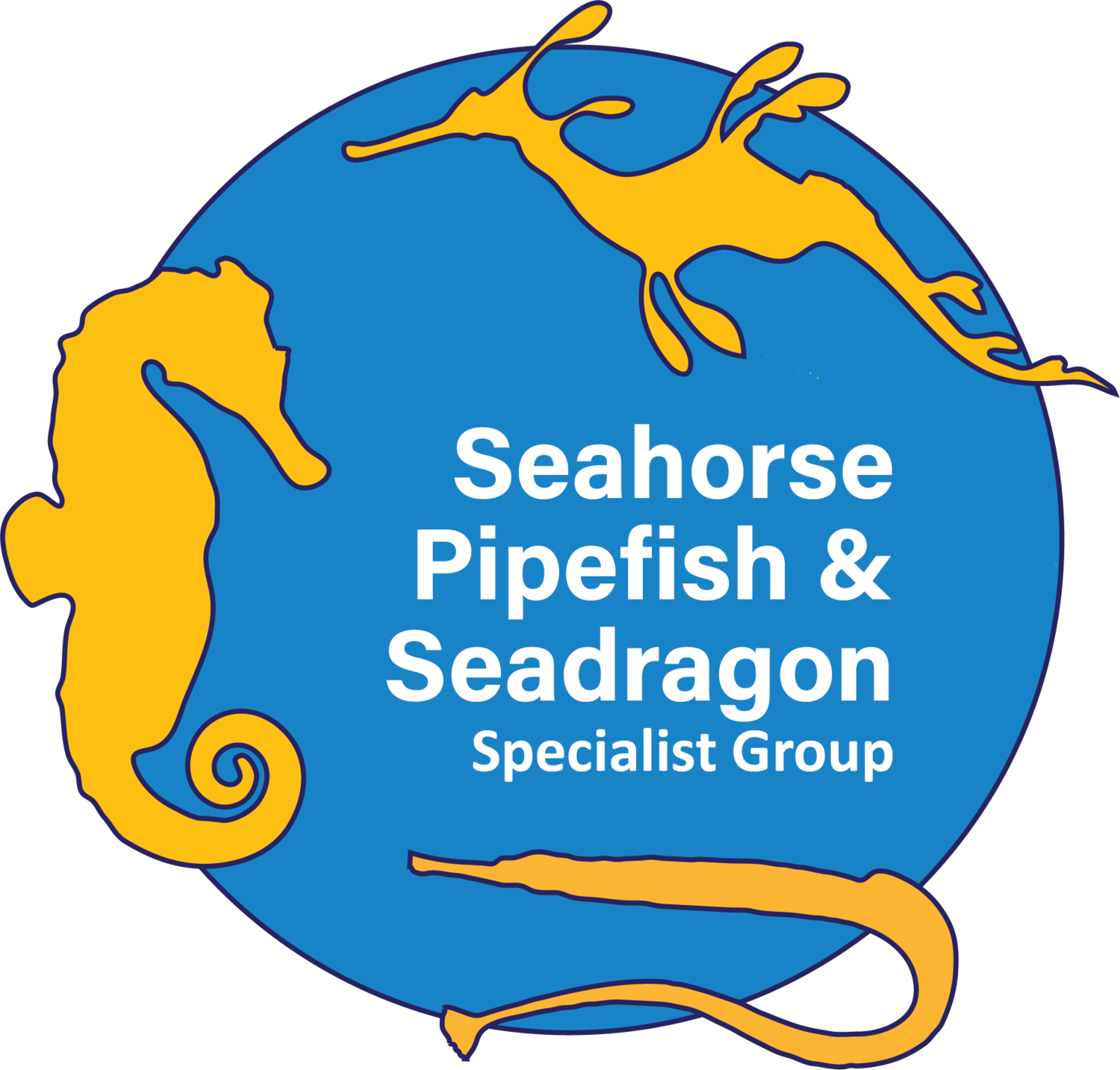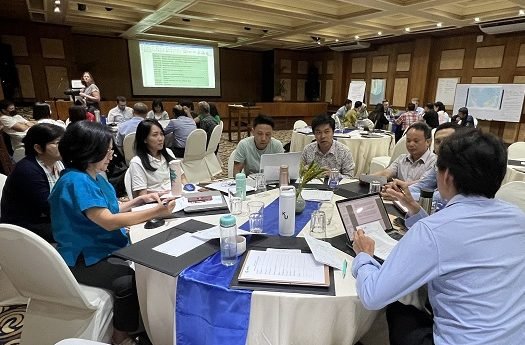[cross-posted from Project Seahorse ] An account by Dr. Sarah Foster, Focal Point for Global Trade at the IUCN SSC Seahorse, Pipefish and Seadragon Specialist Group
As a marine conservation biologist, I am always looking for ways to protect the ocean’s many species, especially seahorses. That’s why I was so excited to lead a recent workshop1 that brought together government representatives and experts from eight different countries2 to discuss seahorse conservation. Together, we worked to improve global export/import controls for seahorses, with a focus on the Asian region.
Sarah Foster leading the Implementing CITES for Seahorses – Asia Region Workshop, held from 14-17 March 2023 in Cebu, Philippines. Photo by Amanda Vincent/ Project Seahorse.
The goal of the workshop was to support countries that are Parties to the Convention on International Trade in Endangered Species of Wild Fauna and Flora (CITES) in meeting their obligations to protect seahorses. Seahorses are on Appendix II of CITES, which means that their trade can continue but must be sustainable and legal. During the workshop, participants worked in their country groups and focused on assessing four key themes: sustainability, monitoring, legality, and enforcement. Project Seahorse provided new tools and guidance for each theme.
Participants from Hong Kong SAR, Thailand, and Vietnam discussing illegal wildlife trade. Photo by Amanda Vincent / Project Seahorse.
One of the highlights of the workshop was our new framework for analyzing policy implementation, which helps ensure that all aspects of seahorse conservation are being addressed. The framework breaks policy implementation into four levels: Technical outputs, Policy outcomes, Field outcomes, and Population impacts. This comprehensive approach ensures that seahorse conservation is being addressed in all areas.
Another important, and exciting, aspect of the workshop was the field trip we took to a fishing community that had a long history of seahorse extraction and trade. There, we met with villagers to explore the consequences of an ongoing ban on seahorse capture and trade, and to discuss options for turning instead to adaptive management and sustainable use. This was a great opportunity to see first-hand the value seahorse trade can have for local communities.
Workshop participants heading out on the field trip to the village of Handumon, Province of Bohol. Photo by Regina Bestbier / Project Seahorse.
Participating in a village savings loan meeting while on the field trip to the village of Handumon. Photo by Regina Bestbier / Project Seahorse.
The workshop was highly interactive and characterized by lively exchanges, notable openness, and remarkable synergies among participants. At the end of the workshop, participants offered valuable comments and input about the new tools and guidance that Project Seahorse had drafted. They also made thoughtful recommendations for CITES Parties, technical committees, and the CITES Secretariat, many of which have broad implications for Appendix II listings in general. Finally, they created country-specific situational analyses which will lay the foundations for action plans for seahorse conservation.
Overall, the workshop was a huge success – it was a notable milestone for Project Seahorse and I was delighted to be a part of it. We were pleased to see great interest and engagement from government representatives and other experts from the Asia region in implementing the CITES Appendix II listing for seahorses. Collectively, we generated many recommendations, fostered engagement, and laid the groundwork for action plans (see workshop report). The challenge now is to ensure that the recommendations are put into practice. We look forward to seeing the positive impact of these outputs on seahorse conservation in the region.
About the Author
Dr. Sarah Foster is Program Leader at Project Seahorse and the Focal Point for Global Trade at the IUCN SSC Seahorse, Pipefish and Seadragon Specialist Group.
Implementing CITES for Seahorses – Asia Region Workshop was organized by Project Seahorse in collaboration with three organizations; ZSL Philippines, the Philippines Bureau of Fisheries and Aquatic Resources, and the Philippines National Fisheries Research and Development Institute. The workshop was held from 14-17 March 2023 in Cebu, Philippines with generous funding from NOAA’s National Marine Fisheries Service of the United States.
China [Hong Kong SAR and Taiwan Province of China], India, Indonesia, Malaysia, the Philippines, Singapore, Thailand, and Vietnam




